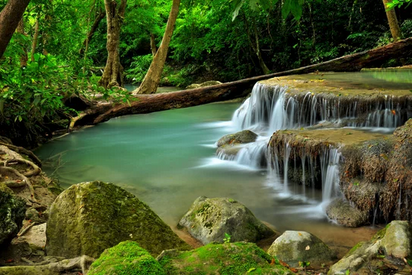6. Streamflow¶
Streamflow, in hydrology, refers to the movement of water in a natural watercourse such as rivers, streams, and creeks. It encompasses the volume, velocity, and timing of water flowing within these channels. Streamflow is influenced by various factors, including precipitation, snowmelt, groundwater discharge, and human activities. Hydrologists measure streamflow to understand water availability, predict flooding, manage water resources, and assess the health of aquatic ecosystems. Analyzing streamflow patterns aids in evaluating the overall dynamics and behavior of water within river systems, which is crucial for water resource management and environmental preservation.
Measuring Streamflow¶
Current Meters: Hydrologists use instruments called current meters to measure the velocity of water in a stream or river. By measuring the speed of the water at various points in a cross-section, they can calculate the discharge (volume of water passing a specific point over time) using the formula: Discharge = Area x Velocity.
Stream Gauging Stations: These are installed at various points along a river or stream to continuously monitor water levels and flow rates. They often use a combination of stage (water level) measurements and mathematical relationships to estimate streamflow.
Flow Rating Curves: These curves are developed by collecting streamflow data over time and correlating the flow rate (discharge) with the stage (water level) of the river. This relationship is then used to estimate streamflow based on the current water level.
Weirs and Flumes: These are structures installed in rivers or streams to create a known constriction, allowing for the measurement of water flow. By accurately measuring the water level upstream or downstream of these structures, the flow rate can be calculated.
Remote Sensing: Modern technologies such as satellite-based remote sensing and aerial imagery are also used to estimate streamflow indirectly by measuring river width, depth, and velocity.
Tracer Studies: In some cases, dyes or tracers are injected into the water, and their concentration downstream is measured, helping to calculate flow rates.
These methods, used either individually or in combination, provide hydrologists with data to estimate the amount and rate of water moving through rivers and streams, aiding in water resource management, flood prediction, and ecosystem health assessment.
- Stage-Discharge
Probability Estimation Tools
Estimation using Regional Regression Equations
Flood Frequency Analysis (B17C)
